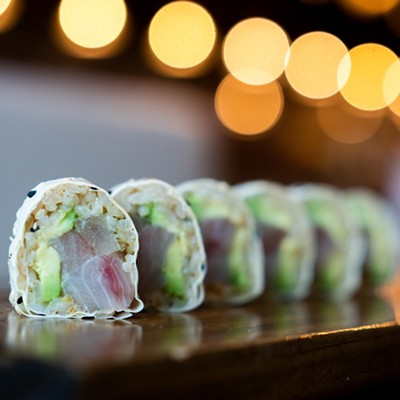If you've been keeping up with the Houston happenings in Japanese cuisine, you will notice that ramen dishes are popping up all over the place. Carl Rosa, founder of the Sushi Club of Houston, started the Ramen in Common group less than one month ago as a response to ramen's new high-profile status as an "it" food.
"Although Houston-area Japanese restaurants have been serving ramen for years, it's just begun to grow in popularity," says Rosa. "And though many Houstonians are now interested in ramen, they may not have an outlet for recommendations, reliable reviews and guidance. That's where Ramen in Common will come into the picture."
Rosa says there are actually guidelines to eating ramen correctly, and -- consequently -- many beginners make a lot of mistakes the first time they eat a ramen dish. So to create a list of rules and guidelines for eating ramen, Rosa visited every Japanese restaurant that he knows and has faith in.
Faith in a restaurant was important to Rosa, since the idea behind the Ramen in Common group is to educate the public not only on ramen but also on traditional Japanese cuisine.
"There is nothing wrong with fusion Japanese cuisine," says Rosa, "and there is nothing wrong with traditional Japanese cuisine, as long as people can tell the difference."
According to the Ramen in Common guidelines, traditional Japanese ramen comes in many varities, including tonkotsu, shoyu, tonkotsu-shoyu, shio and miso. But the foundation of ramen dishes is the same for all of them -- broth and noodles. These two components work together to create a harmonious dish, but they must be spectacular by themselves as well.
"The broth is a different issue than the noodle, which is a different issue than the egg, which is a different issue than the pork," says Rosa. "Everything stands alone; you can grade it individually and then all together."
Rosa suggests five components you should consider when evaluating your ramen:
1. Temperature A ramen dish must be hot, not lukewarm. In fact, Rosa says, if it isn't hot, send the bowl back. That seems simple enough.
2. Smell Just as you would smell wine before taking a sip, you should smell your bowl of ramen before consuming it. Smelling the ramen is a way to determine if you will enjoy the flavor. For example, with tonkotsu ramen, you should smell slow-cooked salted pork instantly.
3. Broth The broth of a ramen dish is extremely important and should be the first component of the dish you taste. Basically, if you enjoy the broth, you will most likely enjoy the entire ramen dish.
4. Noodle After you taste the broth, taste the noodles. When a ramen dish is prepared, the noodles are added to the broth right before the bowl is served. The noodles need to complement the broth in flavor and not stick together, just like pasta, and should be al dente -- not hard and not soft. If you pick up your noodles with chopsticks and they break apart or are in one giant clump, then the dish is not made properly. Rosa says that you want to make sure the noodles marinate in the broth.
5. Toppings Finally, the toppings for a ramen dish should be used to enhance the flavors and your overall experience with the dish. Look for toppings like chashu (slow-roasted pork belly made with garlic, ginger, sake and soy sauce), a soft-boiled egg, nori paper and fish cakes.





